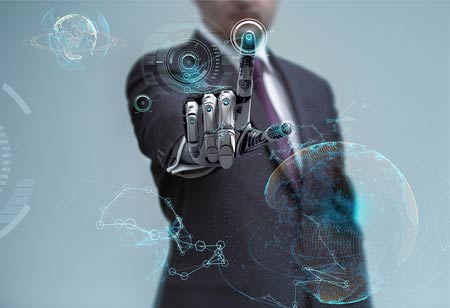THANK YOU FOR SUBSCRIBING
How AI and IoT Are Better Together?
AIoT is particularly useful for sectors that generate massive amounts of data that cannot be processed efficiently by humans.

By
Apac CIOOutlook | Wednesday, December 01, 2021
Stay ahead of the industry with exclusive feature stories on the top companies, expert insights and the latest news delivered straight to your inbox. Subscribe today.
AIoT is particularly useful for sectors that generate massive amounts of data that cannot be processed efficiently by humans. In the transport sector, the volume of vehicle-generated data is increasing every day as fleets upgrade their technology footprint and adopt the latest advanced driver assistance systems (ADAS).
Fremont, CA: The use of artificial intelligence on the Internet of Things (IoT) is enabling rapid innovation in industries ranging from healthcare to manufacturing and transport.
Whereas IoT focuses on developing remote data collection sensor systems, the Artificial Intelligence of Things (AIoT) connects these systems to create collective intelligence that ultimately makes each node in the system smarter. Combining intelligent cognition, advanced computing and stand-alone capabilities, it enables automated human-inspired decision-making with low cost, high scale and high accuracy.
Technology is already the backbone of many of today's commercial transport systems, particularly in the area of fleet safety.
AIoT is particularly useful for sectors that generate massive amounts of data that cannot be processed efficiently by humans. In the transport sector, the volume of vehicle-generated data is increasing every day as fleets upgrade their technology footprint and adopt the latest advanced driver assistance systems (ADAS).
While the combination of video and vehicle data is critical to the detection and mitigation of safety risks, most platforms lack the storage or computing capabilities to process, analyse and interpret all of these data in the cloud. Moreover, devices commonly installed on commercial vehicles generate high-resolution data, making cloud transmission economically prohibitive.
In response, AIoT technology combines in-vehicle and on-vehicle machine learning capabilities with the computing power of cloud processing environments. This integrated approach allows the installed devices to infer advanced insights that would have been lost if the data had to be summarised or reduced prior to transmission to the cloud.
AIoT systems are uniquely bi-directional, bringing together data from hundreds of on-board devices to identify trends that, in turn, inform how these same devices will make decisions in the future.
Onboard devices are constantly making AI-driven decisions based on machine learning algorithms and sensors installed at different points of the vehicle. In the AIoT system, the rationale behind each decision is uploaded to a cloud processing environment, which can then look at data and insights from a large group of devices to determine common trends.This information is then sent back to a device as an update to its machine learning algorithm. The more nodes participating in this loop of compiled "crowdsourced" intelligence, the smarter and better each node will perform.
See Also: Top Artificial Intelligence companies





